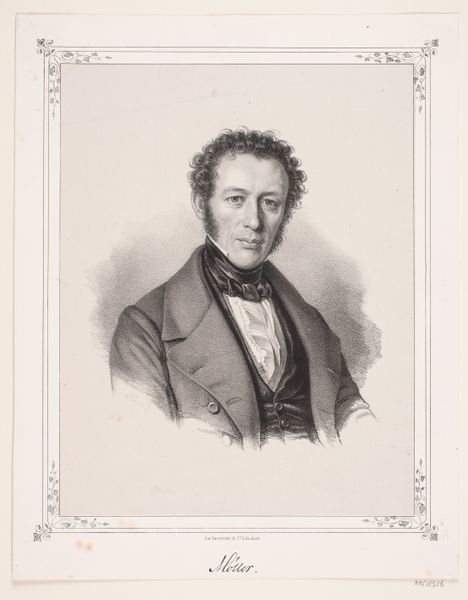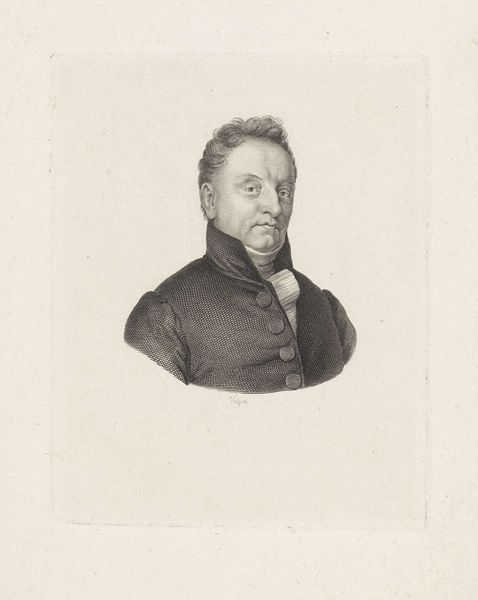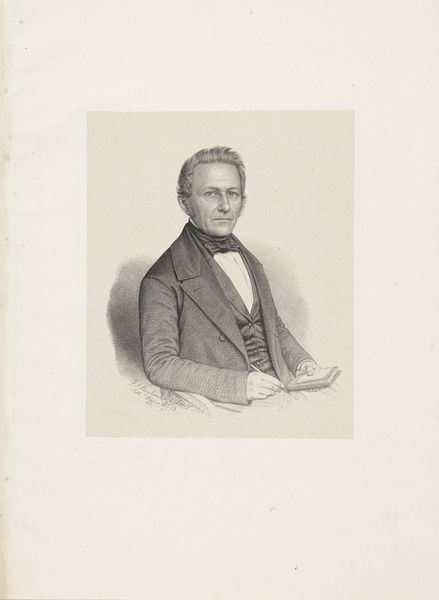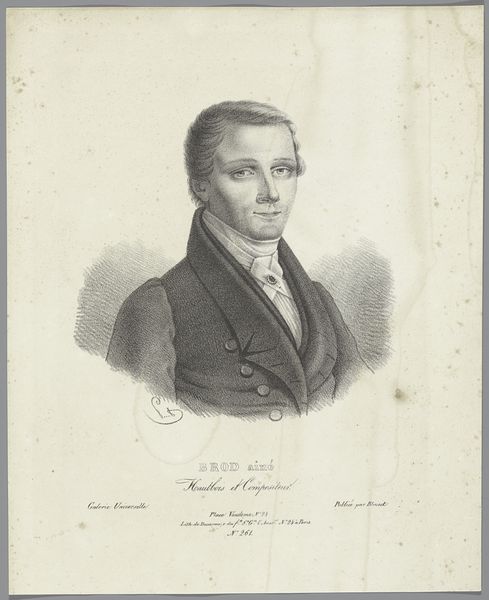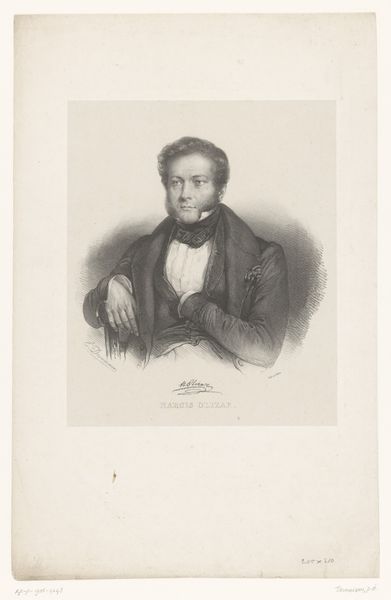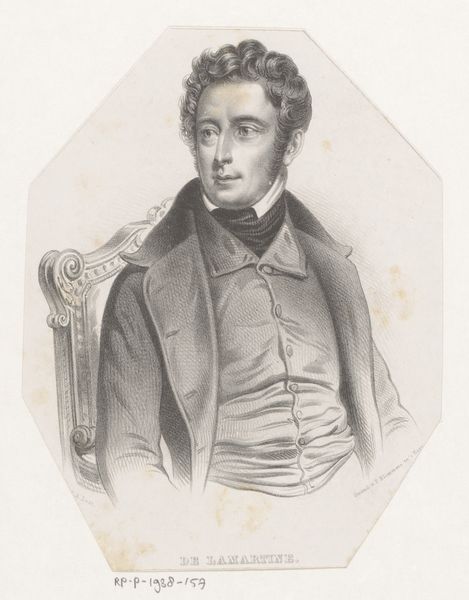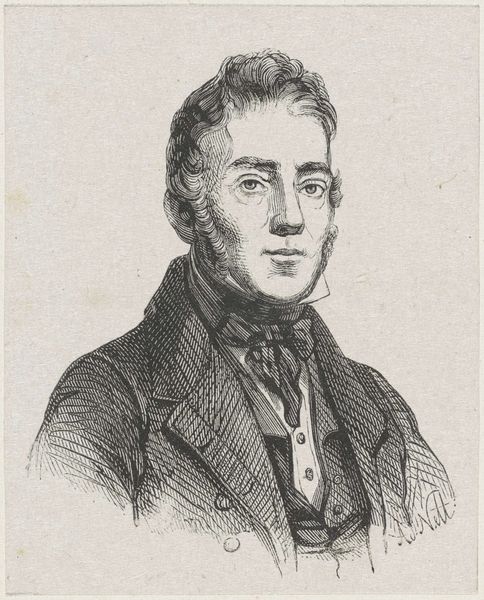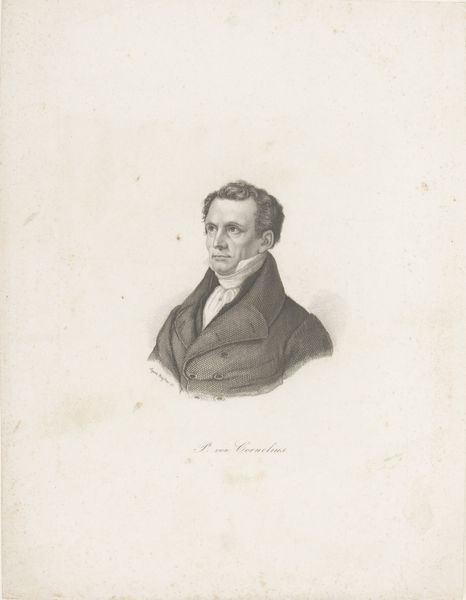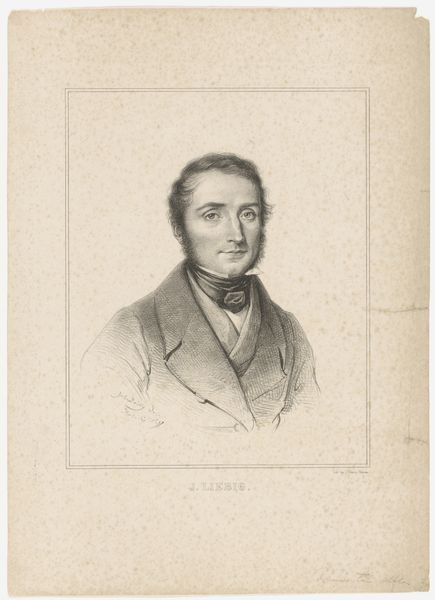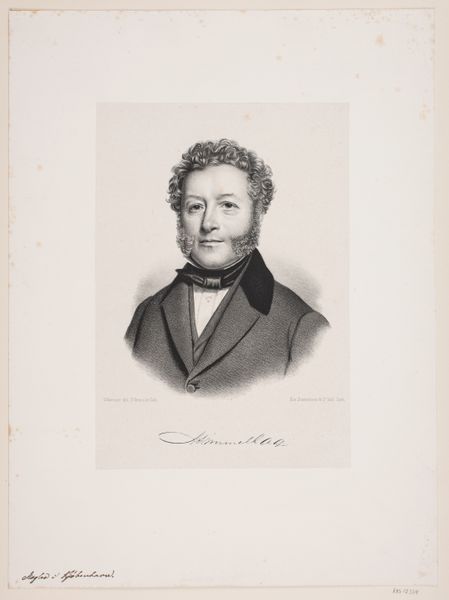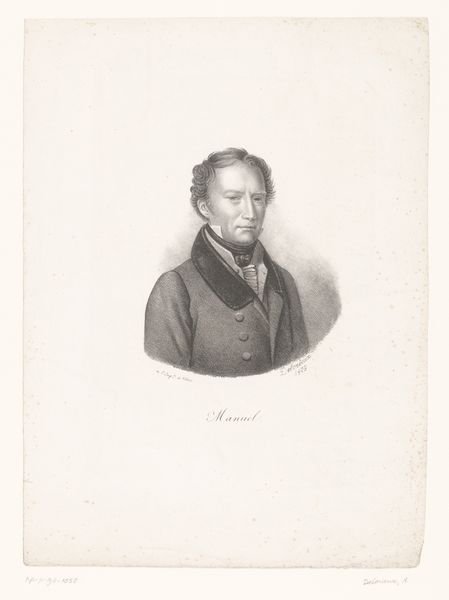
print, engraving
#
portrait
#
neoclacissism
# print
#
caricature
#
historical photography
#
19th century
#
portrait drawing
#
history-painting
#
engraving
#
fine art portrait
Dimensions: height 171 mm, width 118 mm
Copyright: Rijks Museum: Open Domain
Curator: This is a print, "Portret van Joseph Johann von Littrow," dating roughly from 1805 to 1844, housed here at the Rijksmuseum. What strikes you about this piece? Editor: I'm drawn to the incredible detail achieved through engraving. It’s a portrait, yes, but it's also about the labor that goes into each etched line to create the likeness. How does this laborious process influence your understanding of the artwork? Curator: Precisely. Think about the social context: mass production through prints democratized access to images. While seemingly straightforward, each portrait like this represents countless hours of skilled labor. Do you see how the act of replication itself becomes a crucial aspect of its meaning? Editor: Yes, it’s no longer just about the individual depicted, Joseph Johann von Littrow, but about the systems that allowed his image to be distributed. What’s the impact on art historical narratives? Curator: It challenges traditional hierarchies, doesn’t it? High art often privileges unique works, but prints force us to consider the means of production and consumption. Consider the engraver, Hermann Hirsch Pinhas - his contribution is just as vital, wouldn't you agree? Editor: Absolutely! And that really shifts the focus away from the supposed genius of a single artist and highlights the collaborative, industrial aspect of artmaking in this period. So, it encourages us to explore beyond the subject and appreciate the labor and socio-economic forces behind the artwork? Curator: Exactly. By examining the materials and modes of production, we gain a deeper understanding of the era’s artistic values and social structures. What began as a formal portrait yields new insights into cultural and economic history. Editor: This perspective reframes the artwork – it's not just a portrait but a record of production and dissemination of images at that time. Curator: Indeed, and those layered contexts give the artwork new dimensions that invite richer analysis and debate.
Comments
No comments
Be the first to comment and join the conversation on the ultimate creative platform.
